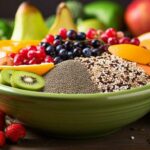We have uncovered the hidden elements of cultivating chia seeds – four groundbreaking revelations that will change your view on this age-old practice.
From its ancient origins in Mesoamerican civilizations to its role as a staple food in pre-Columbian times, chia has a rich history that extends far beyond its modern uses.
Join us as we delve into the medicinal, ritual, and culinary significance of chia, shedding light on its importance in modern seed cultivation.
Prepare to be amazed.
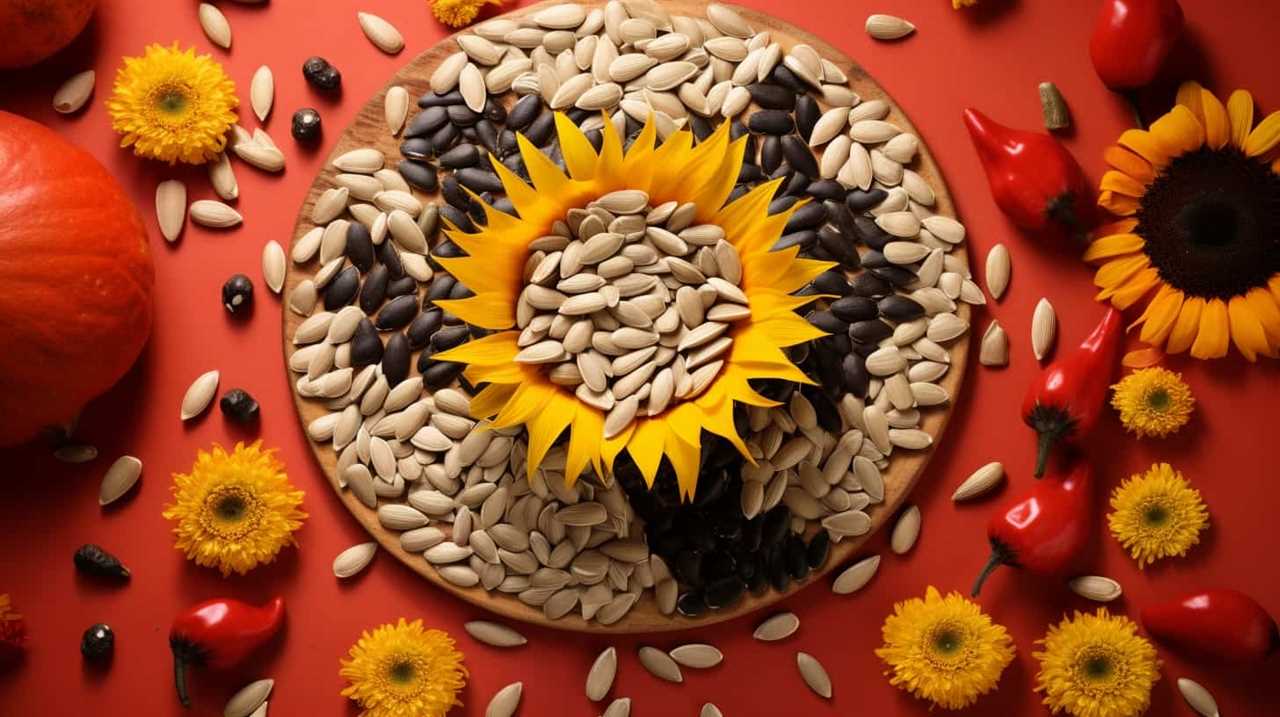
Key Takeaways
- Chia cultivation has a rich historical and cultural significance, symbolizing fertility, abundance, and spiritual connection to the land.
- Chia seeds are highly nutritious and have medicinal properties, promoting heart health, reducing inflammation, and providing energy and endurance.
- Chia seeds were a staple food source in ancient civilizations and continue to be valued for their nutritional benefits and environmental impact in modern seed cultivation.
- Chia cultivation has positive environmental and economic impacts, requiring less water, minimal use of pesticides and fertilizers, supporting biodiversity, preventing soil erosion, and providing income and employment opportunities for farmers.
Ancient Origins of Chia Cultivation
We have been cultivating chia seeds since ancient times, dating back to pre-Columbian civilizations in Central and South America. Chia’s impact on modern diets can’t be overstated. Rich in omega-3 fatty acids, fiber, and protein, chia seeds have gained popularity as a superfood in recent years.
But their significance goes beyond nutrition. Chia cultivation holds deep cultural roots, symbolizing fertility, abundance, and spiritual connection to the land. The ancient civilizations recognized the importance of chia, not just as a staple food source, but also as a sacred plant. Its cultivation was surrounded by rituals and ceremonies, reflecting the reverence these societies had for the earth’s gifts.
Today, we continue to appreciate the cultural heritage of chia cultivation and incorporate it into our diets, acknowledging its historical and nutritional value.
Chia Seeds in Mesoamerican Civilizations
During Mesoamerican civilizations, chia seeds played a crucial role in the daily lives and diets of indigenous communities. These communities relied on chia seeds as a staple food source due to its high nutritional value and its adaptability to Mesoamerican farming techniques.
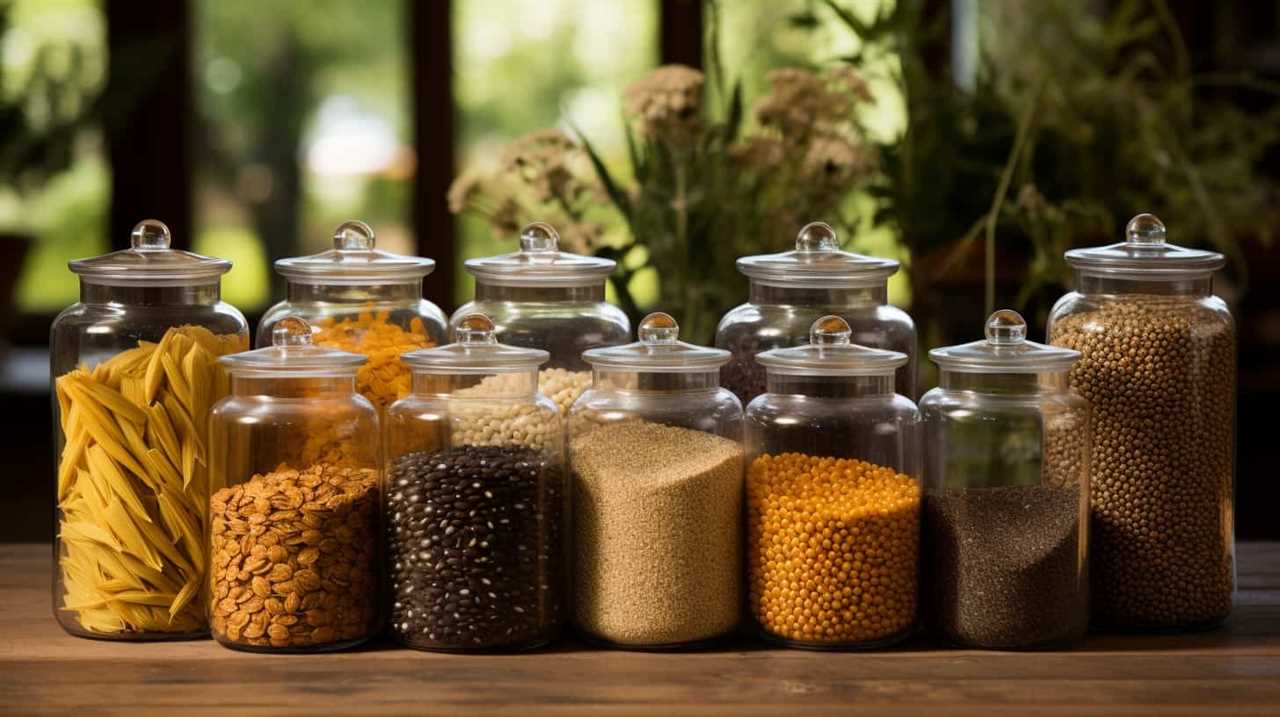
Here are two key insights about chia seeds in Mesoamerican civilizations:
- Dietary Importance:
- Chia seeds were rich in omega-3 fatty acids, protein, and fiber, making them a valuable source of nutrition.
- Indigenous communities used chia seeds to supplement their diets and provide essential nutrients.
- Cultivation Techniques:
- Mesoamerican farmers developed innovative techniques to cultivate chia seeds, such as sowing them in small gardens or terraced fields.
- These cultivation methods allowed for efficient chia seed production, ensuring a consistent food supply for the indigenous communities.
The integration of chia seeds into the daily lives of Mesoamerican civilizations showcases the resourcefulness and ingenuity of these ancient cultures in utilizing their natural environment to meet their nutritional needs.
Chia as a Staple Food in Pre-Columbian Times
Chia seeds served as a dietary staple in Pre-Columbian times, providing essential nutrients and sustenance for indigenous communities. The Pre-Columbian significance of chia as a staple food can’t be overstated, as it played a crucial role in the survival and development of these ancient civilizations.
Chia wasn’t only a rich source of protein and fiber but also contained omega-3 fatty acids, antioxidants, and various vitamins and minerals. Its cultural importance extended beyond its nutritional value, as chia was deeply ingrained in the religious and ceremonial practices of these civilizations.

The cultivation and consumption of chia seeds were seen as sacred acts, and chia was often offered as a tribute to deities. Its presence in daily life and rituals highlights the cultural significance placed on chia during Pre-Columbian times.
Historical Medicinal and Ritual Uses of Chia
Chia seeds have been utilized for their medicinal and ritual purposes throughout history. These tiny seeds possess numerous medicinal properties that have been valued by ancient civilizations.
Here are two sub-lists that highlight the medicinal and spiritual significance of chia seeds:
Medicinal Properties:
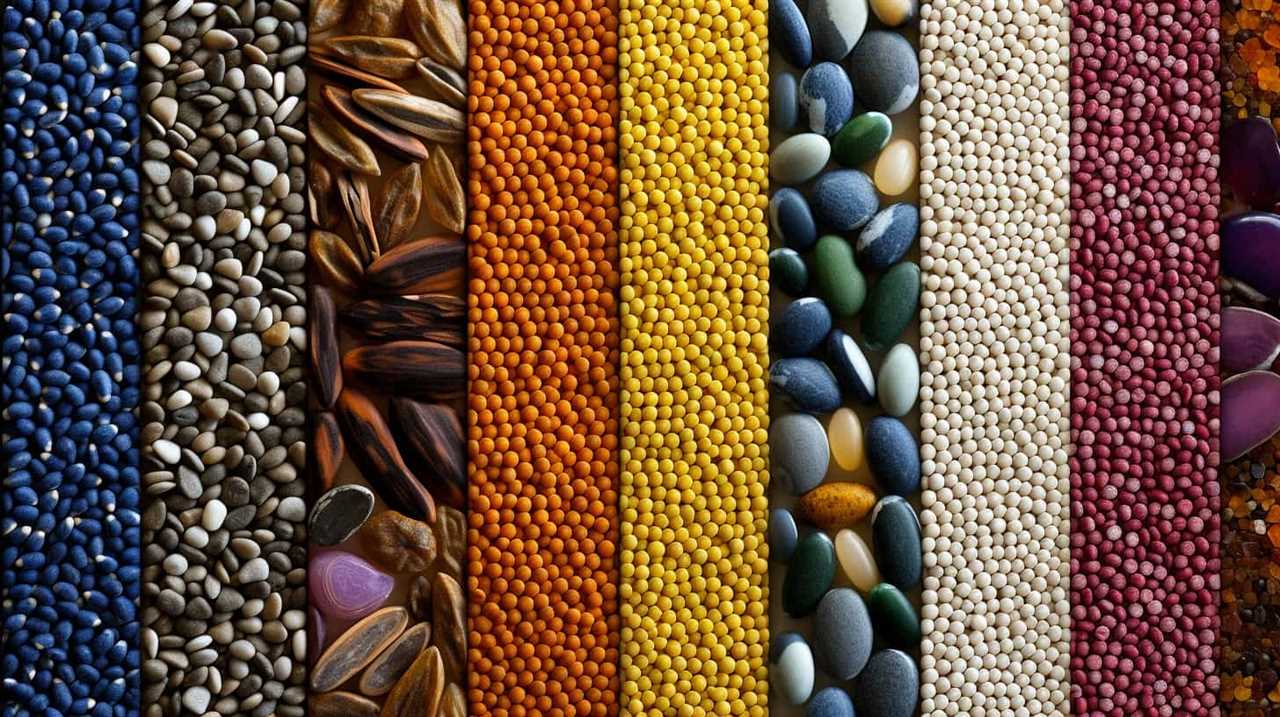
- Rich in omega-3 fatty acids, which promote heart health and reduce inflammation.
- High in antioxidants, which help protect against cell damage and aging.
Spiritual Significance:
- Used in traditional healing practices for their ability to provide energy and endurance.
- Considered a sacred seed by some Native American tribes, symbolizing strength and vitality.
Chia seeds have played a vital role in the health and well-being of cultures across time. Their medicinal properties and spiritual significance continue to make them a valuable resource for serving others in various ways.
Chia’s Role in Modern Seed Cultivation
In our exploration of age-old seed cultivation, we now delve into the role chia plays in modern seed cultivation.
Chia, scientifically known as Salvia hispanica, is a versatile crop that has gained popularity due to its numerous nutritional benefits and its role in sustainable agriculture. Chia seeds are rich in omega-3 fatty acids, fiber, and antioxidants, making them a valuable addition to the diet.
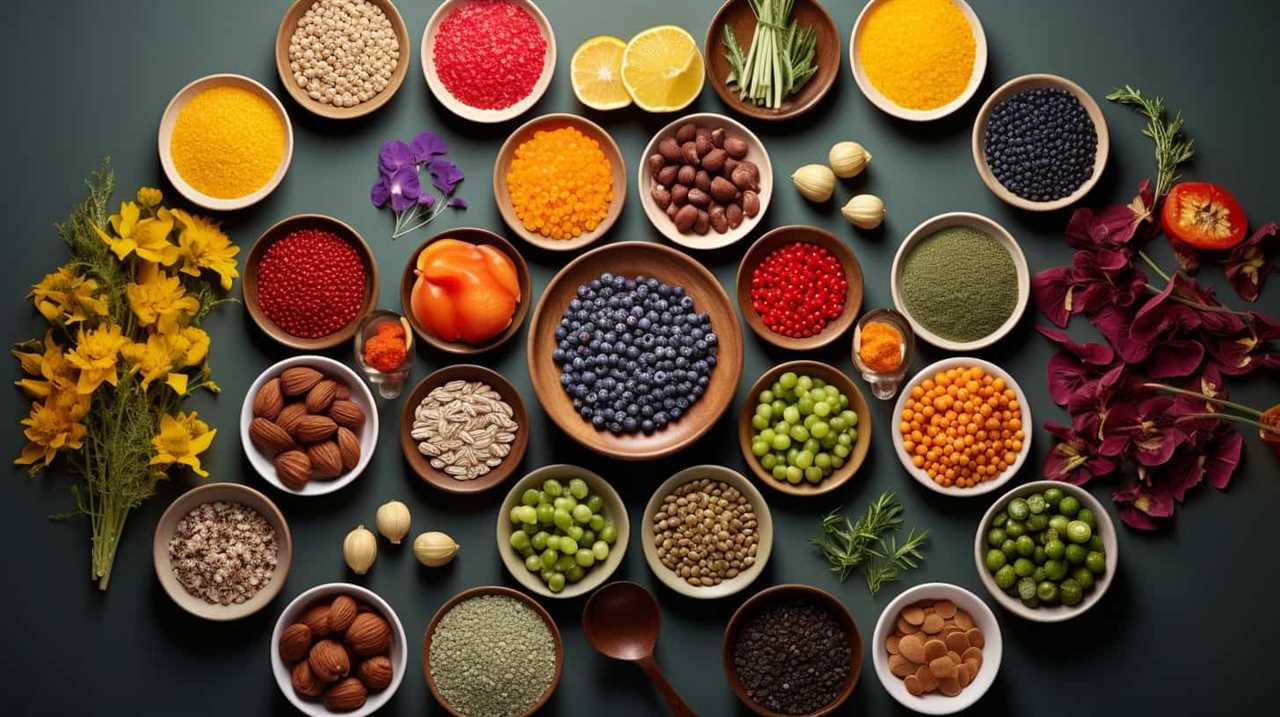
In addition to its nutritional value, chia has also become an essential component of sustainable agriculture practices. Its ability to grow in diverse climates and its resistance to pests and diseases make it an attractive crop for farmers seeking to reduce their environmental impact.
Chia’s role in modern seed cultivation extends beyond its nutritional benefits, contributing to sustainable and environmentally friendly agriculture practices.
Frequently Asked Questions
How Long Does It Take for Chia Seeds to Germinate?
Chia seeds typically take 5-10 days to germinate under optimal conditions. Adequate moisture and a warm temperature range of 70-85°F (21-29°C) promote successful germination. Patience is key when cultivating chia seeds.
What Are the Different Varieties of Chia Seeds Available Today?
There are many different chia seed varieties available today, each with their own unique nutritional benefits. We can explore the diverse options and discover the health advantages they offer.
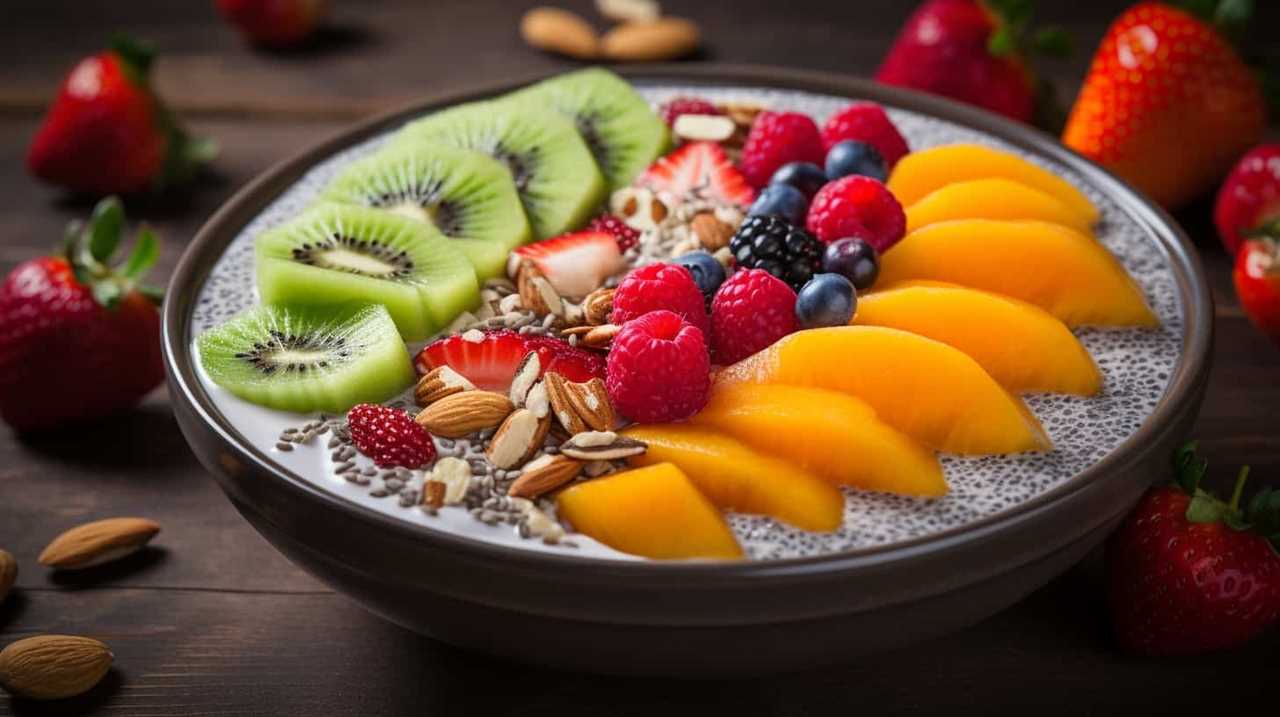
Can Chia Seeds Be Used as a Substitute for Eggs in Baking?
Yes, chia seeds can be used as a vegan egg substitute in baking. They offer numerous benefits, including providing moisture and binding properties. Incorporating chia seeds in recipes is a nutritious and sustainable option.
Are There Any Side Effects or Risks Associated With Consuming Chia Seeds?
We found that consuming chia seeds may have side effects and associated risks. It’s important to note that these effects vary from person to person, but potential concerns include digestive issues and allergic reactions.
Can Chia Seeds Be Grown in Home Gardens or Do They Require Specialized Conditions?
Growing chia seeds at home is possible, but it requires specialized conditions. The right combination of sunlight, temperature, and soil moisture is crucial for successful cultivation. However, with proper care, it can be a rewarding experience.
Conclusion
In conclusion, the ancient cultivation of chia seeds has provided us with invaluable insights into their historical significance and diverse uses. From Mesoamerican civilizations to modern seed cultivation, chia has played a vital role in both staple food consumption and medicinal practices.

Its resilience and versatility have made it a valuable resource throughout the ages. By delving into the past, we gain a deeper understanding of chia’s enduring impact and its potential for future innovation.




